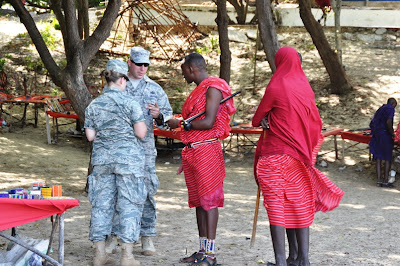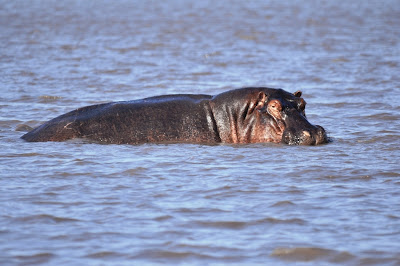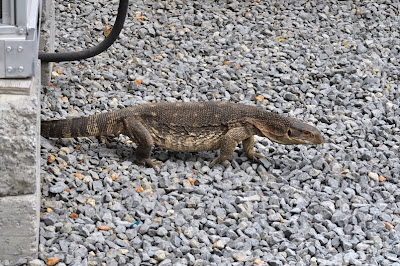After spending the first part of this trip in the highlands of Kenya, we finally made our way down to the coast. It’s a three day drive between the projects, which means long days in the car and quick stopovers in hotels along the way. We finally arrived at FOL Manda Bay late in the day and got settled into our SouthWest Asia (SWA) huts, which are no more than glorified plywood bunkhouses.
The next morning we left the base and stopped by the Hindi school, where the USDOD has a contracted out to have a set of latrines built as well as installing a cistern system and repairing the current well pump. The headmaster was nice and very appreciative. As the work will begin in the next months, I will be spending a lot of time at this location.
The next stop was into the town of Lamu, which is on an island. We had personnel at Manda arrange for a launch to take us from the docks to the town. Our boat is the closest in the picture.
Here is one of the traditional dows along the waterfront, sitting on the bottom as the tide was coming back in. They bring the boats close, the tide goes out, then they load the boat and wait for the tide to come back in, hoping that it will float free. As a naval architect, I was truly worried about this one tipping over, and learned that often the cargo loading become overzealous and boats tip as the tide comes back in.
Here is what downtown Lamu looks like from the water. The town’s streets (alleys) are only about 5-8 feet wide. There are no real vehicles, everyone uses donkeys to get around the town. We met the contractor at one of the restaurants next to his office and discussed the two projects that he is supposed to do. We are still working through the design process with him, as he fired his structural engineer for poor performance just before Christmas and is playing catch-up.
After the meeting we went to the Lamu museum which was in the old colonial governers mansion on the waterfront. A guide showed us through the exhibits, which were much nicer than I expected for a museum in Lamu, Africa. Here is a map of the coastal region showing the towns, their period and cultural influences.
Carvings on doorframes was a real status symbol in this area and each culture had its own designs and methods. Kate ended up buying a set of carved door frames from a local vendor. She will have fun trying to ship them home.
This is the set of silver jewelry worn by an African bride from the coastal tribes.
The maritime part of the museum was my favorite part.
This is the rooftop view from the museum, each home tries to build slightly taller than the neighbor so they catch more breeze. In that same regard, after viewing some of the construction techniques employed here in Africa, I am always hesitant in entering a 2 story building.
Here is Kate and another HOA member bartering with Masi tribesmen for a couple of rungu sticks.
That evening we went just outside the base to a pond where hippos gather. We waited until curfew hoping that the giants would come out for their evening feeding, but they never left the water.
A series of shots at the hippo pond of a heron catching and eating a snake. It worked very hard to unwind the snake from its face before quickly eating it whole and alive.
There were two large families and a handful of solitary males in the pond. This guy was the closest at about 50 yards away.
He began making some grunting sounds that were echoed by others in the pond.
Then he began to open his mouth wide. It was very exciting to see since those teeth are about 8+inches long and the mouth opens nearly 3 feet wide. But, a later investigation determined that the noises were the first warning, and the opening of the mouth repetitively was the second warning sign of a hippo that is very unhappy with you in its territory. I also learned that the hippo kills more people in Africa than any other animal.
The next day on base I was introduced to Larry, the base's African Monitor Lizard mascot. He was chilling around the trashcans outside of the galley, picking through the stones for pieces of mango and pineapple that were dropped. Very wary of people too close, he would puff up, get high up on his legs, and make tail whips aimed at anyone coming out of the galley to throw their trash away.
The next evening we returned to the hippo pond, but they were all far away and doing nothing exciting (worth photographing). This one heron went by and I grabbed these shots.
































































